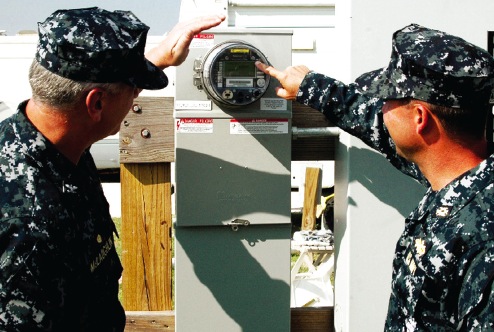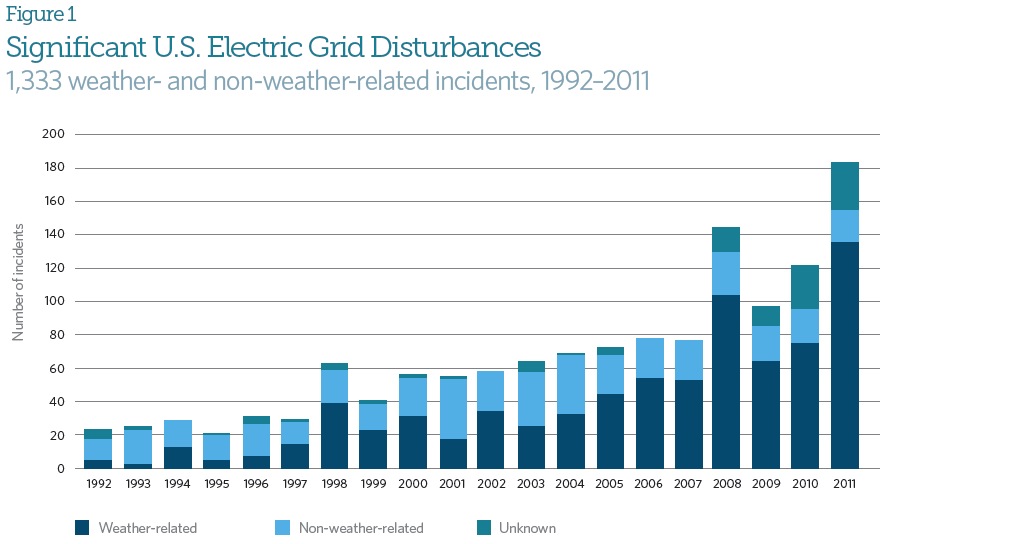THE PEW CHARITABLE TRUSTS
Overview
 The U.S. Department of Defense defines installation energy security as the ability to assure access to reliable sources of energy and deliver that power to meet operational needs on its bases in the United States and abroad. The U.S. military needs safe, secure, reliable, and affordable energy to operate facilities on an uninterrupted basis. To meet essential power requirements, defense leaders have initiated far-reaching steps to harness advanced technologies capable of conserving energy, enabling on-site production from renewable sources, and saving taxpayers millions of dollars.
The U.S. Department of Defense defines installation energy security as the ability to assure access to reliable sources of energy and deliver that power to meet operational needs on its bases in the United States and abroad. The U.S. military needs safe, secure, reliable, and affordable energy to operate facilities on an uninterrupted basis. To meet essential power requirements, defense leaders have initiated far-reaching steps to harness advanced technologies capable of conserving energy, enabling on-site production from renewable sources, and saving taxpayers millions of dollars.
That effort began in earnest in 2008, when the department convened a prestigious task force, formed by the Defense Science Board, to explore the key energy challenges facing the military in the 21st century. The panel’s report, “More Fight–Less Fuel,” called on the U.S. military to address two major challenges: the significant and growing demand for fuel in combat operations, and the vulnerability associated with almost complete reliance by military installations on the nation’s aging and vulnerable commercial power grid.
“More Fight–Less Fuel” prompted immediate responses by the U.S. armed forces. Across the Department of Defense, or DOD, a wide range of initiatives has been launched to address operational and installation energy challenges. The Pew Charitable Trusts tracks these energy initiatives.
This latest report examines how the military is leveraging private-sector expertise and resources at home to deploy clean and efficient energy in service of economic, environmental, and national security interests. The report’s research is derived from publicly available information, close collaboration with DOD officials and experts, site visits to installations across the United States, and a partnership with Navigant Research, a leading market research firm that analyzes global clean energy technology markets.
The Department of Defense has one of the world’s largest inventories of real estate, with 550,000 buildings and structures encompassing an estimated 2.3 billion square feet. These facilities require energy to run the lights; power communications, computers, and other advanced electronics; and provide heating and cooling. To support and advance its missions, the military has prioritized energy security at all installations.
The research in this report details how defense leaders have initiated wide-ranging steps to harness advanced technologies to conserve energy, enable on-site production from renewable sources, and save taxpayers millions of dollars at these DOD facilities in the United States.
Key findings
Installation energy security is a topline priority
The ability to assure access to reliable sources of energy and deliver that power to meet operational needs on military bases in the United States and abroad is a priority for three reasons:
- Mission assurance: U.S. military installations must have their key energy requirements met 24 hours a day. The role of domestic military bases has expanded to support forward combat operations, emergency response, humanitarian relief, and homeland defense, and has reinforced the need for an uninterrupted power supply.
- Cost savings: Facing significant budget cuts, the Defense Department is seeking to reduce costs, and its $4 billion bill for facility energy represents a compelling target.2 Over the past decade, the department has saved hundreds of millions of dollars in energy costs by deploying efficient and renewable technologies.
- Compliance: DOD must comply with laws enacted by Congress, executive orders, and goals established by military leaders, including requirements for 3 percent annual reductions in facility energy intensity (energy used per gross square foot) and obtaining 25 percent of its energy production or procurement from renewable sources by 2025.
Download full version (PDF): Power Surge
About the Pew Chartable Trusts
www.pewtrusts.org
“We are an independent nonprofit organization – the sole beneficiary of seven individual trusts established between 1948 and 1979 by two sons and two daughters of Sun Oil Company founder Joseph N. Pew and his wife, Mary Anderson Pew. From its first day in 1948, Pew’s founders steeped the new institution with the entrepreneurial and optimistic spirit that characterized their lives. Early priorities included cancer research, the Red Cross and a pioneering project to assist historically black colleges.”








 RSS Feed
RSS Feed